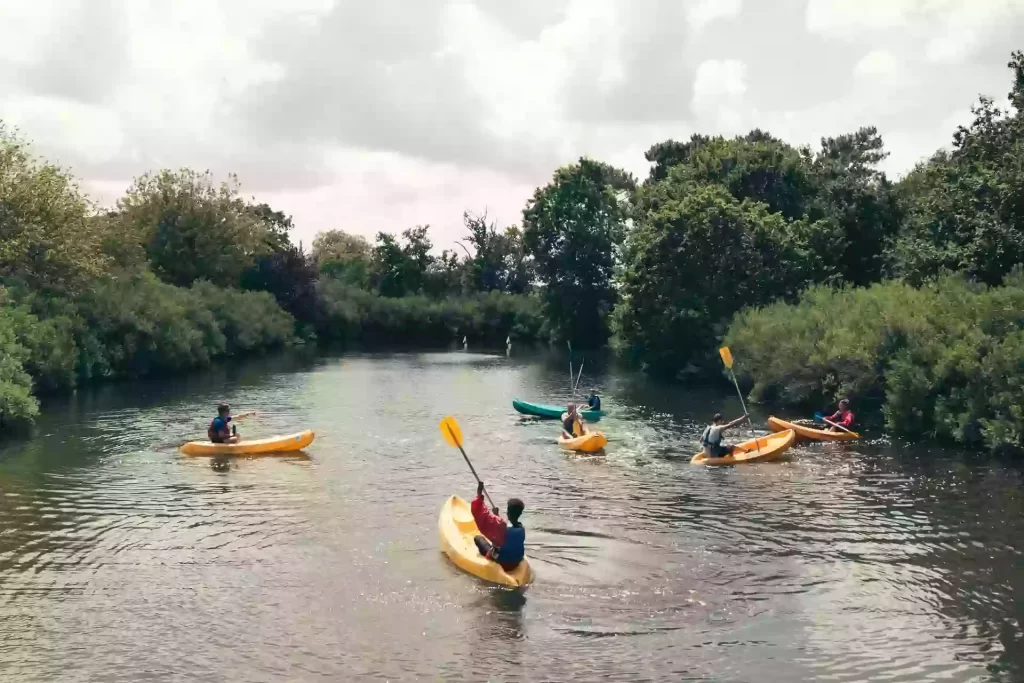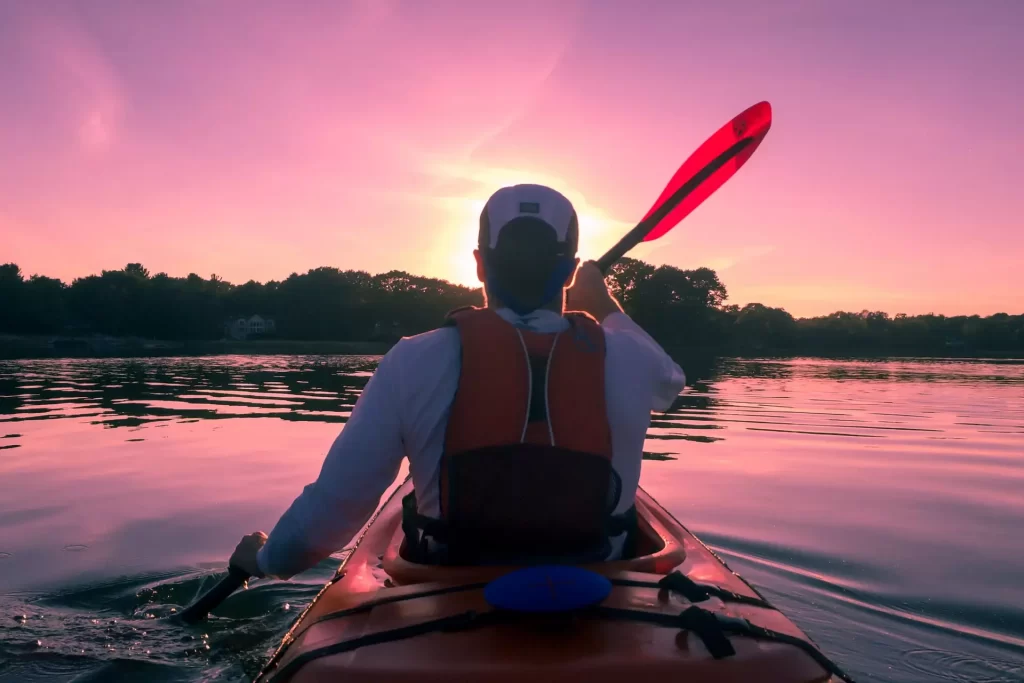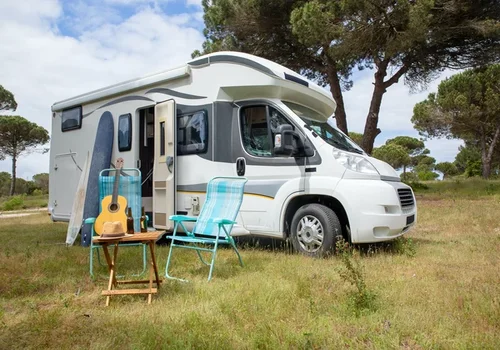Kayaking is a fun and exciting way to explore the great outdoors, but it can be intimidating for beginners. Whether you’re looking to paddle on calm lakes or navigate through gentle rapids, it’s important to have a solid understanding of the basics before hitting the water.
In this guide, we’ll cover everything you need to know to get started with kayaking, including the different types of kayaks, essential gear, and basic paddling techniques.
Table of Contents
What are the types of kayaks?
First, let’s talk about the different types of kayaks. Generally, two types of kayaks are widely found: sit-in and sit-on-top.
Sit-in kayaks have a cockpit for the paddler to sit inside, while sit-on-top kayaks have an open deck for the paddler to sit on top of.
Sit-in kayaks are typically better for colder climates, as they provide more protection from the elements and are suitable for whitewater kayaking and touring.
Sit-on-top kayaks, on the other hand, are generally more popular for warmer climates and are often used for recreational activities such as fishing and snorkeling.
Learn more from the detailed comparison of sit-in kayak vs sit-on-top kayak.
What gear do you require?
When it comes to gear, you’ll need a few essential items to get started with kayaking. The most important piece of gear is a personal flotation device (PFD), also known as a life jacket. It’s important to kayaking for beginners that, they must wear a PFD at all times while on the water.
Next, you’ll need a paddle. The length of your paddle should be based on your height and the width of your kayak.
A general rule of thumb is to measure the distance from the ground to your chin, and add 6 inches to that measurement. This will give you the ideal paddle length for your kayak.
So, to start simply, you need these basic items -PFD, paddles, kayak but if you are more passionate or as you grew up in paddling you would require some extra gear and accessories. You can take a quick look at what could be a basic or advanced setup as a beginner kayaking.
What paddling skills should beginners know?
Beginner paddlers should start by learning the basic paddling techniques and building their strength and stamina. This will help them to navigate their watercraft, maintain balance and stability, and control the direction of travel.
Some of the most important paddling skills for beginners to master include the forward stroke, the J-stroke, and the low brace turn. With proper instruction and practice, these skills will provide a solid foundation for beginner paddlers to build upon as they continue to develop their paddling abilities.
Forward Stroke
The forward stroke is used to propel the canoe forward. It involves dipping the paddle in the water on one side of the canoe and pulling it towards the rear of the canoe. The forward stroke is the most basic paddling technique and is used to cover distance or move the canoe in a desired direction.
By alternating the side on which the paddle is dipped and pulled, the paddler can maintain a steady pace and keep the canoe moving forward. The forward stroke is an essential technique for any paddler, regardless of the type of watercraft or the purpose of the trip.
Reverse Stroke
Similar to the forward stroke but applied in the opposite direction, used to move the canoe backward.
J-Stroke
Involves a combination of a forward stroke and a ruddering action, where one side of the paddle is dipped deeper in the water and angled to steer the canoe. This allows the paddler to keep the canoe moving forward while also making adjustments to the direction of travel.
The J-stroke is an important technique for maintaining control and stability when paddling in open water or navigating through tight spaces, such as narrow channels or around obstacles.
Draw Stroke
A pulling motion, where the paddle is placed near the canoe and then pulled towards the paddler to move the canoe sideways.
Stern Draw Stroke
Similar to the draw stroke, but applied at the back of the canoe to move the stern in the desired direction.
Sculling
A gentle back-and-forth motion of the paddle near the canoe to maintain balance and control, or to make small adjustments in direction.
Low Brace Turn
Involves planting one blade of the paddle vertically in the water and using it as leverage to turn the canoe in a specific direction.
High Brace
High brace is used to counterbalance the canoe when it begins to tip. The paddle is positioned vertically in the water on the side opposite the tilt to stabilize the canoe.
Kayaking for beginner in a nutshell
In conclusion, kayaking is a fun and exciting way to explore the great outdoors and offers numerous health benefits. With the right gear, proper paddling techniques, and a bit of knowledge, anyone can get started and enjoy the beauty of the water.
Remember to always wear a personal flotation device, be mindful of the weather and water conditions, and start with easy and calm water routes to build your confidence and experience. Happy paddling!



Pingback: Basics of kayaking: All you need to learn before start paddling! - Safekayaking